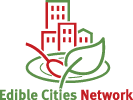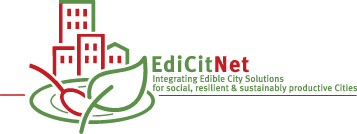Andernach
Front Runner City
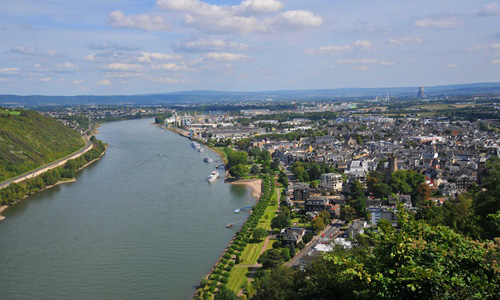
Contact
City administration
Laeufstrasse 11, 56626 Andernach
Phone: 0049-2632-922288
Email: Anneli [dot] Karlsson [at] andernach [dot] de
Andernach (30,000 inhabitants) is one of the oldest cities in Germany, and celebrated its 2000th anniversary in 1988. Over the years, Andernach has developed into an attractive residential city, as the city’s lively development today and over the years shows. This development results on the one hand from the convenient and central location of the city to the surrounding metropolitan areas (Koblenz, Bonn) and on the other hand from the urban flair that Andernach offers.
Andernach started the first edible city project in 2010, when 101 tomato varieties were planted at public green spaces at the city centre. This project to illustrate the diversity of vegetable varieties was so well received by the citizens that it was continued and expanded in the following years. Fruit trees, chickens and sheep joined the vegetable sites and thus defined a colourful, lively townscape. Today, visitors and citizens can enjoy the blossoming edible plants throughout the entire city area, which they can later harvest for free. The social aspect of this concept is underlined by the involvement of long-term unemployed people in the maintenance of the edible city.
The EdiCitNet Living Lab in Andernach aims to explore and promote the social aspect of the edible city: environmental education, integration of marginalised groups, and social cohesion. Functioning as a community garden, it invited groups from across the city to participate in caring for it, and it is accessed by schools and youth centres, enabling young people take part in a range of activities as part of an environmental education programme.
Official Website
Get inspired!
Berlin
Front Runner & Follower City
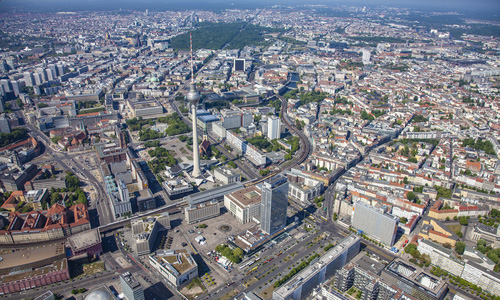
Contact
Senate Department for Urban Development and Housing Berlin
Fehrbelliner Platz 4, 10707 Berlin
Phone: 030 – 9(0)139-4850
Email: tina [dot] hilbert [at] sensw [dot] berlin [dot] de
Berlin (3.75 million inhabitants) is the capital and biggest city of Germany located in the east of the country. As a multi-ethnic and multi-functional city, Berlin is a magnet for people and business, a city that is growing and changing. Shaping the future of Berlin as a growing green metropolis is a task that involves taking into account social, economic and environmental issues.
Edible City Solutions in Berlin are mostly a bottom-up movement. There are hundreds of garden and allotment communities spread all over the city. Community gardens in particular offer places for neighbours to meet, zones for biodiversity and extracurricular education venues. These areas are therefore crucial for the social development of the city.
Berlin is the only EdiCitNet city with the hybrid role of a Front Runner City and a Follower City. As a Front Runner City, Berlin is developing a Living Lab on two sites – a former cemetery and a former agricultural enterprise – together with the EdiCitNet partner Prinzessinnengarten/Nomadisch Grün gGmbH, who have a lot of experience in community gardening. As a Follower City, Berlin will take the opportunity offered by the Masterplan process to develop new and enhance existing Edible City Solutions.
The goal of both interventions – the Masterplan and the Living Lab – is to support socially disadvantaged neighbourhoods, to promote social cohesion and to improve quality of life in the city of Berlin.
Get inspired!
Carthage
Follower City
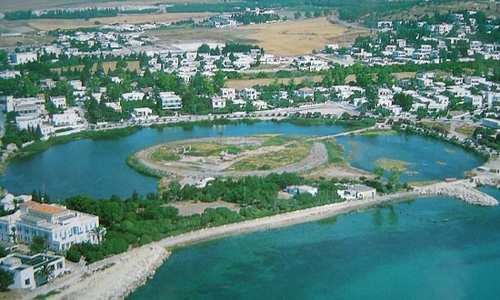
Contact
Municipality of Carthage
Phone: +216 98 43 66 69
Email: k [dot] malki [at] planet [dot] tn
Phone : +216 97 84 35 20
Email : haddad_maali [at] yahoo [dot] fr
Carthage (26,000 inhabitants) is located in the north-east of the capital of Tunisia, a city with a rich historical past. The ancient Punic city, destroyed and rebuilt by the Romans, is today a grand suburb of the city of Tunis. The city still has many archaeological sites, most of them Roman, classified as world heritage locations by UNESCO.
Due to its location, Carthage’s climate is classified as warm and temperate. The city of Carthage, which was one of the leading agricultural areas in the Roman Empire, was very fertile because it received enough rainfall for successful farming, but nowadays Carthage does not have agricultural activities.
As a Follower City in the EdiCitNet Project, the city of Carthage is exploring the development of unexploited areas of the city (60% of the city are reserved for archaeological sites and unexploited land) for sustainable urban agriculture. The aim of the Masterplan process is to develop a concept for an edible city throughout Carthage, where all currently unused archaeological areas are utilised for urban agriculture – enabling economic development while also facilitating the production of high quality local vegetables and fruits.
Official Website
Get inspired!
Guangzhou
Follower City
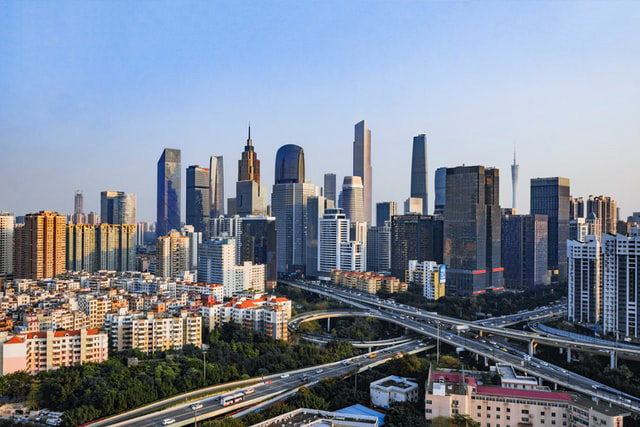
Contact
Guangzhou Urban Planning & Design Survey Research Institute
Yuying Liu
Email: 1207502647 [at] qq [dot] com
Guangzhou city (18.67 million inhabitants) is the capital of the Province of Guangdong and a major port. Together with other metropolitan areas located in the Pearl River Delta Economic Zone, it forms part of one of the largest metropolitan agglomerations in the world (ca. 45 million inhabitants). The opening up to foreign investment in the 1980s led to a rapid economic development of the area that resulted in a large-scale conversion of agricultural land to urban development and industrial uses.
Today, meeting the daily food needs of the growing population and ensuring access to safe food constitute important challenges in the city. Guangzhou already has a well-developed food production, distribution, use and recycling system with an established food supply chain and diversified and rich food culture, while the government has initiated a number of policies and plans aimed at ensuring access to food for city dwellers.
A growing interest in increased quality of life, however, in the context of growing population density, particularly in central parts of the city, the loss of green spaces in the city centre, reduced levels of biodiversity and increasing exposure to heavy rainfall and typhoons, have added to a growing interest in exploring the multi-faceted benefits that urban agriculture could provide.
The Guangzhou City Team, which includes representatives from government agencies and specifically municipal community engagement teams, research institutions and a design agency, is envisioned as a policy research and planning team that aims to effectively promote ECS planning projects. The main objectives of the City Team are to promote safe, stable and efficient food supply in the city, and to encourage community-based public participation in urban food planning.
Get inspired!
Havana
Front Runner City
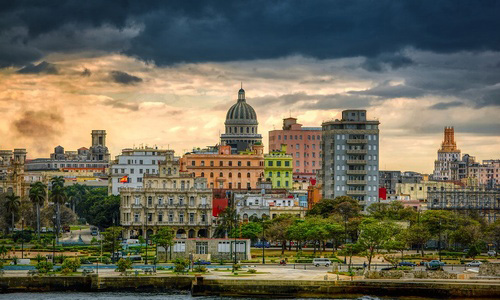
HAVANA (2.1 million inhabitants) is an exceptional example for urban agriculture on a large scale. Following the end of its relations with the Soviet Union, Havana fell into one of the worst economic crises in history. Starting in 1994, the government’s Ministry of Agriculture established a Department of Urban Agriculture, and went on to make Havana into one of the most successful examples of urban agriculture in the world today. More than half of the food consumed in the country is grown organically within the country. At first, yields were low, owing to lack of farming experience and inputs. But with strong government support, urban agriculture was rapidly transformed from a spontaneous response to food insecurity to a national priority.
Urban farmers in Havana use predominantly low-tech technologies and practices achieving yields of up to 20 kg per m2, yields 10 times higher than commonly achieved in small-scale agriculture. Among the technologies used are drip irrigation, organoponics, regular addition of compost and other good horticultural practices (e.g. the use of well-adapted varieties, mixed cropping, crop rotation and integrated pest management). In the process, Havana has also become a pioneer in a worldwide transition to sustainable agriculture that produces ’more with less’. The example of Havana demonstrates how Edible City Solutions can be mainstreamed in a city and provides up-scaling and feasibility knowledge in a Living Lab, accompanied by extensive experience on the level of urban planning and strategic implementation.
Get inspired!
Lomé
Follower City
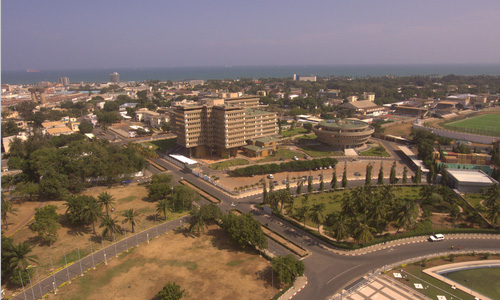
Contact
City administration
508 AV. Nicolas Grunitzky, Lomé
Phone: +22822201884
Email: edicitnet [dot] lome [at] gmail [dot] com
The City of Lomé (2 million inhabitants) is the capital city of Togo. It is located in the south of the country, next to the sea, with an autonomous, modern and deep-water port which constitutes the prime economic activity of the area. Lomé is also the most important site in the so-called modern sector. Thus, the number of inhabitants has doubled in recent years, the suburbs are expanding more and more to the north and southeast. The city of Lomé has a tropical and humid climate and experiences flooding during the rainy season due to the city being lower compared to the level of the sea. On average the temperature in Lomé is 26.8 °C. The average annual rainfall is 859 millimetres.
The EdiCitNet Project, a pilot project for the city of Lomé, aims to contribute to the improvement of eating habits in order to preserve the health of the citizens of Lomé. Vegetable gardens and fruit trees in the city not only provide leisure areas and shade, but also vegetable and fruit buying points for school canteens and households. The EdiCitNet Project will also provide some jobs for the municipalities to help fight youth unemployment. A network of NGOs promoting organic food systems will be set up to ensure the success of the project.
Official Website
Get inspired!
Montevideo
Follower City
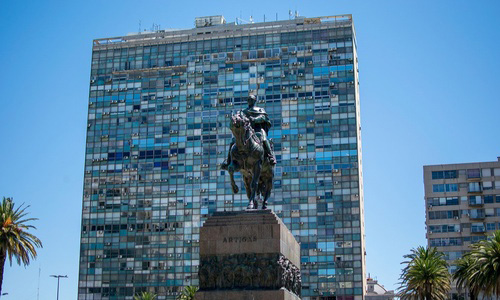
Montevideo (1.5 million inhabitants) is the capital of Uruguay and is located on the banks of the Rio de la Plata. It extends over an area of 530 square kilometres, nearly 60% of which is rural.
The urban area has multiple green spaces, of which 60% are cared for by institutions that offer services for the benefit of the community. At the same time, its streets and avenues are full of trees that contrast with almost twice as many vehicles that circulate in the city.
In contrast, in the deteriorated old town of Montevideo to counteract the strong social problems and lack of public green spaces for young and old people, civil initiatives are developing gardening projects. The local government promotes urban agriculture through primary schools to encourage environmental education. The Ministry of Education and Culture recently launched the “Plantar es cultura” (“Planting is culture”) programme to support community gardens and agro-biodiversity.
The Ministry of Education and Culture is a partner of the EdiCitnet Project and works in close coordination with the Municipality of Montevideo and other actors to execute the project in an integral and inter-institutional way.
Official Website
Get inspired!
Oslo
Front Runner City
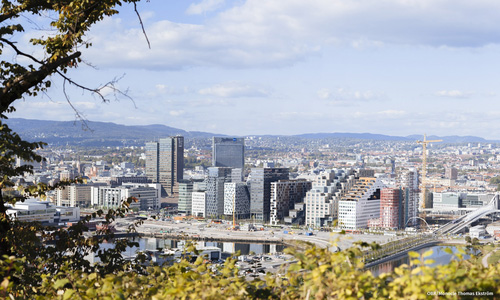
Contact
Bymiljøetaten
Karvesvingen 3
0507 Oslo
Email: stephanie [dot] degenhardt [at] bym [dot] oslo [dot] kommune [dot] no
Oslo (683,794 inhabitants), the capital of Norway and the country’s largest city, is one of the fastest growing cities in Europe. Located between the Fjord and the protected Marka, the city’s geographic boundaries prohibit urban expansion outwards. Instead, Oslo is being sculpted from within through compact urban development, increasing density in existing urban centres and creating new hubs.
In the face of rapid development, Oslo has prioritised access to clean air, clean water and green areas by means of sustainable planning such as creating new recreational areas through reopened waterways that were converted as the city grew. This enables the city to better manage storm water in the wake of more frequent and heavier rainfall, but it also provides people with new green areas and plants and animals with new habitats. Oslo is also pioneering an integrated climate financing strategy, the Climate Budget, to reach its goal of cutting greenhouse gas emissions by 36% by 2020 and by 95% by 2030 compared to 1990 levels. The city’s commitment to ensure a sustainable and climate-neutral urban development and the preservation of its blue-green character has won Oslo the title as European Green Capital 2019.
The main goal of the Living Lab in Oslo is to pilot Edible City Solutions (ECSs) that provide social and economic value, creating opportunities for citizens and entrepreneurs through knowledge exchanges, networking, and infrastructure. The Living Lab in Oslo is run as Linderud community garden (Linderud Nærmiljøhage), an inactive local farm that was taken over by the EdiCitNet City Team in Oslo and opened to the public in 2020. The community garden itself is about 8000m2 and is situated on a historic farm, owned by a private foundation and run by a museum (MiA Museum i Akershus).
Official Website
Get inspired!
Rotterdam
Front Runner City
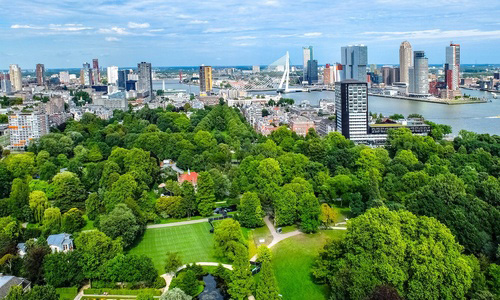
Rotterdam (630,000 inhabitants) is a city that is always on the brink of innovation and evolution. Strategically located in a delta landscape, Rotterdam is home to the largest port in Europe which connects them in more ways than one to rest of the world. Rotterdam’s port is the hub of Europe’s maritime cluster, but it also operates at a global level in other economic sectors like Clean Tech, Life Sciences & Health, Energy, Agro-food, Transport & Logistics and Finance. As such the city is considered an economic powerhouse within the Dutch economy.
The city’s 630,000 inhabitants comprise approximately 175 different cultural identities, which can be considered extremely diverse, while the Greater Rotterdam Area boasts a total of 1.2 million residents.
The main goals of the EdiCitNet Living Lab in Rotterdam are to set up a city-wide green initiatives network, supporting green and edible initiatives (for example by facilitating their professionalisation, reducing procedural costs and enhancing technological innovations) and providing access to knowledge about local business opportunities and financing models.
Main challenges include streamlining responsibilities at a municipal level and optimising processes and interactions between the municipality and the edible city initiatives.
Official Website
Get inspired!
Sant Feliu de Llobregat
Follower City
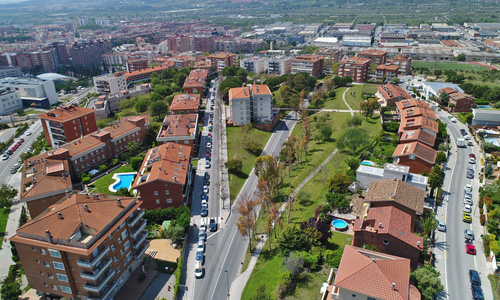
Contact
Plaça de Lluís Companys, 1, 08980
Sant Feliu de Llobregat, Barcelona, Spanien
92JW+H4 Sant Feliu de Llobregat, Spanien
+34 936 85 80 02
Sant Feliu de Llobregat (44,000 inhabitants) is a small municipality located twelve kilometres east of Barcelona in Catalonia. Key development challenges for Sant Feliu today include:
- ensuring the social cohesion of a population that is shaped by multiple waves of immigration,
- revitalising an economy that was heavily hit by the economic crisis of the late 2000s, and
- resolving a myriad of environmental problems related to its heavy industrialization during the twentieth century, including the loss of agricultural land, heritage and pollution, in addition to emerging problems such as climate change mitigation and adaptation.
Over recent years, the local government has focused on transforming Sant Feliu de Llobregat into a smart city with a strong focus on digitalisation, social entrepreneurship, innovation, and citizenship participation in decision-making processes.
Official Website
Get inspired!
Šempeter-Vrtojba
Follower City
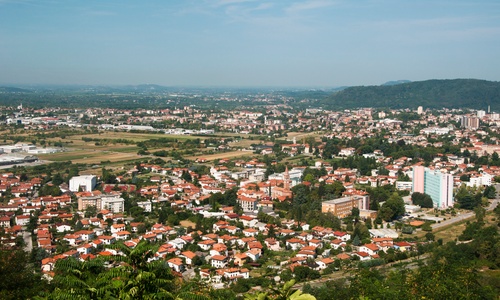
Contact
Municipality Šempeter – Vrtojba
Trg Ivana Roba 3 a, 5290 Šempeter pri Gorici
Phone: 05 335 10 08
Email: jerneja [dot] ternovec [at] sempeter-vrtojba [dot] si
The Municipality of Šempeter-Vrtojba (6,300 inhabitants) is located on the western edge of Slovenia, right next to the Italian border, only 150 km from Venice and is characterised by vibrant green woodlands, vineyards, fields and meadows. The Vrtojba-Bilje knolls, along with a large part of the surrounding plains offer optimum conditions for viticulture, fruit farming, horticulture, green grocery and floristry. Hence, the area is also known as “The Garden of the Goriška Region”.
With a surface area of only 15 km2, it is one of the smallest in Slovenia in terms of geographic area. It has strong economic indicators, a high percentage of well-educated residents, a high standard of living as well as a high expenditure for conservation and sustainable energy. The area is also interesting as regards landscape and climate.
The local community is aware of the challenges and is taking action in order to improve the entrepreneurial culture and create an effective and completely supportive environment, to ensure the best infrastructure possible and to create an effective environment for development and innovation.
Official Website
